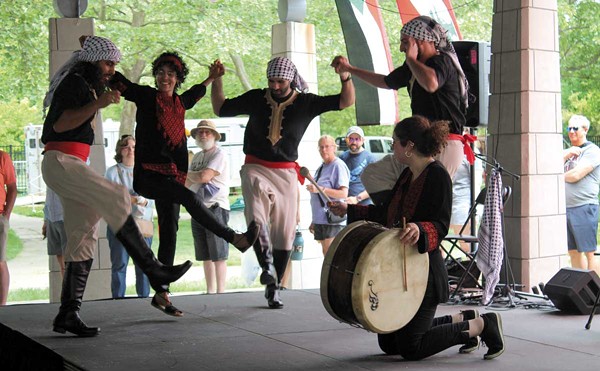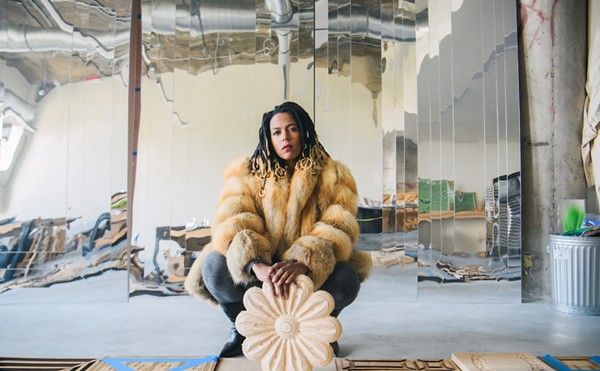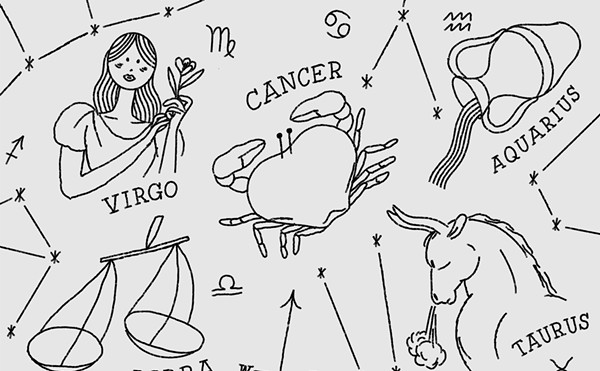Ten-year-old Margaux Whitney has been figure skating since she was 3. The many medals she has won hang on her bedroom walls along with photos of Olympic skaters, including her favorite, Oksana Baiul.
A fourth-grader at Detroit’s Bates Academy, Margaux skates six days a week. She also plays the violin, sings with a youth choir and competes in academic games.
"She does her homework in the car or at the rink," says her mother, Robin Whitney.
On the ice, Margaux is serious, poised and graceful beyond her years. Off the ice, she becomes a typical 10-year-old again. "Watch me, Mommy," she implores. "I’m going to do six loops."
Margaux skates with the Renaissance Figure Skaters, a Detroit-based club, and will perform as a soloist in the club’s ice show this weekend.
For Margaux, the performance is yet another step up. This year, she tested into the United States Figure Skating Association’s "preliminary" category in free-skating and the "pre-juvenile" in moves-in-the-field. These levels are about halfway up the USFSA’s competition structure, which eventually qualifies skaters for the Olympics.
"I’d like to go to the Olympics one day," Margaux says. She knows how to do it: "Just keep moving up through the regionals, and the nationals, and the world."
Interest in figure skating has boomed in recent years, and metropolitan Detroit is well known for Bloomfield Hills’ Detroit Figure Skaters club where Olympic champions Tara Lipinski and Todd Eldridge trained.
But in the African-American community, figure skating is just beginning to gain popularity. When skater Debi Thomas won Olympic bronze in 1988, she became the first and only African-American to win a medal not just in skating, but at the Winter Olympics.
The expense of skating, the typically suburban location of rinks, and limited exposure to winter sports are cited to explain the scarcity of African-American skaters.
When Margaux’s coach, Michael Orr, was growing up, he told his grandparents that he wanted to skate.
"They told me ‘No. It’s a rich man’s sport. It’s a white man’s sport,’" he recalls. Orr got a paper route and paid his own way.
"A friend told me I could buy ice skates at Sears for $9," Orr says. "I used to take the West Chicago bus to Greenfield and then take the Greenfield bus all the way down to Fairlane Ice Arena. I’d skate from 6:30 to 9:30 and then take the bus home. I was 11-and-a-half. My grandparents left the back door open, and dinner was on the stove."
Orr recalls competing in the nationals in 1994. "Just to be there means that you’re one of the best skaters in the country," he says.
"When I look back on it, I think I did accomplish a lot. Especially being an Afro-American, because there are not that many Afro-American skaters."
Orr is now the director of the Renaissance Figure Skaters, which has its home at Jack Adams Arena on Detroit’s northwest side. He also teaches and coaches at the Novi Ice Arena.
"I wanted to give back something I needed but didn’t get when I was coming up," Orr says. "It’s important for kids to have somebody of their own background who’s been there."
The 60-member club is 95 percent African-American.
Orr recognized Margaux’s talent and began coaching her when she was 8. "She’s come so far in such a short time," he comments.
Robin Whitney says it takes a huge commitment from family and friends so Margaux can skate.
"At first people didn’t understand. If I talked about skating, people assumed I meant roller skating," she says.
Keith Whitney, Margaux’s dad, is a minister at Sanctuary Fellowship in Detroit, and Robin is a secretary at a church in Ferndale. Most of Robin’s salary goes toward skating.
"People have been so kind," Robin says. Sometimes a member of the church will pay for a costume, or a friend who owns a business will sponsor a competition. This year Margaux’s grandmother paid for her ice skates, which cost $600.
"And you can’t get them big and grow into them," Margaux cautions. She needs a new pair every year.
Robin Whitney has never added up the cost. "I don’t want to know," she says.
But she can readily itemize: Coaching fees — $250 a month, year-round. Club membership and ice fees — $350 a year at Renaissance, and in order to get enough ice time, Margaux also skates in Novi ($500 a year) and Farmington Hills ($300 a year). Ballet lessons twice a week are $90 a month and private on-ice ballet coaching is $100 a month. Entering a competition costs $75, and Margaux enters five or six a year. Sometimes travel expenses are involved. Testing is $50 twice a year. And this year, she spent $375 for costumes — one had $60 worth of sequins.
"I want to be able to provide the means for her to go as far as she wants to go," Robin Whitney says. "If she wants to do it, I don’t want to have to say to her that we can’t afford it."
For her part, Margaux works hard, currently focusing on her jumps. The most difficult jump she can land is the double Salchow, an edge jump named after Ulrich Salchow. Her next hurdle is the double loop, while she considers the double toe the hardest.
"You start on the inside edge, you turn on that edge, you stick your toe in, and you have to hoist yourself around and complete two rotations, and land on the outside edge," she explains.
In competition, she can get nervous. "The judges never smile," she notes. "You don’t want to slip because they’ll go write it down as soon as you do."
Once in a while, she doesn’t feel like skating. "Some days it just doesn’t click," she says. But most days there is magic to it.
"I like the feel of the ice," she says. "It’s like being on a slippery floor. But you can glide across the ice and do all kinds of moves and steps."
And after the Olympics? "I’d like to become a violinist. I love Mozart."





